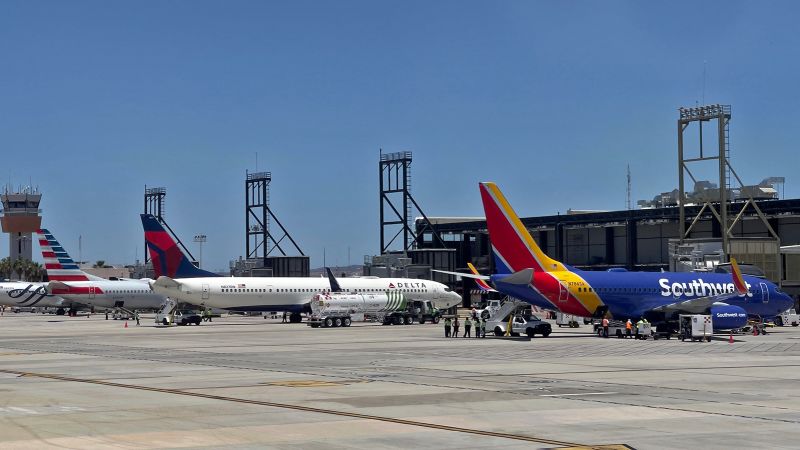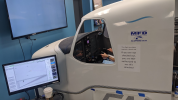-
Please take a moment and update your account profile. If you have an updated account profile with basic information on why you are on Air Warriors it will help other people respond to your posts. How do you update your profile you ask?
Go here:
Edit Account Details and Profile
You are using an out of date browser. It may not display this or other websites correctly.
You should upgrade or use an alternative browser.
You should upgrade or use an alternative browser.
The SHOW: Airlines still a "good gig"??
- Thread starter A4sForever
- Start date
I can’t find the hyperlinks but I’m seeing several articles about US airlines being shortstaffed and canceling flights. Any airline bubbas got the scoop? Is this a pilot shortage, nonpilot shortage, or both?
It's a pilot shortage but it's also shortages in practically every other work group, and you name it- flight crew, gate arents, fuelies, rampers, the guys who push wheelchairs through the terminal. Sometimes the holdup in one area cascades into the others.
I should the specified that it's a training (including re-qaulifying) bottleneck at a lot of the majors.Not a true pilot shortage. They have lots of folks coming back in a training back log. They may have also let too many of us go for good, including me, but there are plenty of pilots out there. They just need to get qualed.
I'm sure they're approaching guys like @wink, who took an early out, to get hired on as sim instructors. Or if they're not doing that then they're contemplating it in the head sheds. That would either increase production (although simulator time may be the bottleneck in some cases) and/or free up company pilots who split their time between the sims and flying, as the case may be with some training departments.
Hmm ? . No one asking me to be an instructor. Did I do something wrong? I suspect the bottleneck is at the simulator door. I don't know the instructor count, but you can only run a sim so many hours in a day. Traditionally, that has been about 22 hours a day. Two hours for PMS and the like. If every box is running at 100% more instructors isn't going to help much. I am sure that is it, or they would have called me, right....right?I should the specified that it's a training (including re-qaulifying) bottleneck at a lot of the majors.
I'm sure they're approaching guys like @wink, who took an early out, to get hired on as sim instructors. Or if they're not doing that then they're contemplating it in the head sheds. That would either increase production (although simulator time may be the bottleneck in some cases) and/or free up company pilots who split their time between the sims and flying, as the case may be with some training departments.

3 major US airlines will not mandate shots for their unvaccinated workers | CNN
The CEOs of Southwest Airlines, American Airlines and Delta Air Lines say they are not requiring unvaccinated employees to receive the shot, breaking with United Airlines' mandate that workers get vaccinated by October 25 or face getting fired.
The war for talent continues
The training experience required by a Level D sim - which in turn allows for "zero flight time" conversion/initial by the FAA is codified in a standard - and without the motion, the standard doesn't get met.does sim motion materially add to the training experience?
put another way, everything else being equal, would lack of motion detract from the training experience?
(2 hours every day adds up)
- FAA FFS Level A – A motion system is required with at least three degrees of freedom. Airplanes only.
- FAA FFS Level B – Requires three axis motion and a higher-fidelity aerodynamic model than does Level A. The lowest level of helicopter flight simulator.
- FAA FFS Level C – Requires a motion platform with all six degrees of freedom. Also lower transport delay (latency) over levels A & B. The visual system must have an outside-world horizontal field of view of at least 75 degrees for each pilot.
- FAA FFS Level D – The highest level of FFS qualification currently available. Requirements are for Level C with additions. The motion platform must have all six degrees of freedom, and the visual system must have an outside-world horizontal field of view of at least 150 degrees, with a collimated (distant focus) display. Realistic sounds in the cockpit are required, as well as a number of special motion and visual effects.
What passes for level D certification is pretty good but it does have a few shortcomings. It's not completely realistic (notwithstanding what sim instructors sometimes seem to claim). It's typically very good for most normal maneuvers but it's a little awkward for the more challenging things like engine failures that make the plane wobble a lot.
The airlines started doing unusual attitudes in the sims too, sometimes extreme nose high/low or rolls way past 90 degrees. Needles to say that motion isn't faithfully replicated at all, but the idea is the practice and exposure is better than nothing at all.
The airlines started doing unusual attitudes in the sims too, sometimes extreme nose high/low or rolls way past 90 degrees. Needles to say that motion isn't faithfully replicated at all, but the idea is the practice and exposure is better than nothing at all.
yeah, I get FAA requirements - what I'm asking is more along the lines of "does simulator motion enhance training?"
Overall, I'd argue it does enhance training. That said, I would experience much less vertigo in the newer -60 sims that had better visuals and a better image system (mirrors instead of a balloon) than the sims you used when you were in, @squorch2 . But even that could still cause disorientation.
Image generation can also cause a loss of realism, even with motion. I wouldn't feel great in one of the Metro Level D sims when we did VFR EP stuff, I think in part due to latency in the image. Doing instruments wasn't an issue, obviously, since you can't see outside.
I think so. Certainly there must be some scientific data to back it up or the FAA would not allow zero flight time type ratings in a level D. Certainly for normal ops, I found my sim training was outstanding. Very good replication. So I would say it very much enhanced my training. As to just how well current technology replicates some emergencies or abnormal ops, it really isn't up for discussion. We are not going to do V1 cuts in transport category jets any longer. And we can not go flying and set an engine on fire or jam a rudder. You will not know the fidelity of your sim training until it actually happens to you. I think then it won't matter too much. Most guys who have had serious problems say training prepared them very well, but I haven't heard specifics on the accuracy of visuals or motion. But even if visuals and motion were not completely accurate for a particular abnormal, if the training prepared you to take the right actions, that is all that matters.yeah, I get FAA requirements - what I'm asking is more along the lines of "does simulator motion enhance training?"
One anecdotal data point. I had a low speed event in an MD-80. Long story retold somewhere else on AW. At one point after the speed started to come back I made a very gentle nose up correction just to slow the decent. I got the onset of an accelerated stall on the wing. A really good buzz. Released the back pressure and all was well. What I felt as a buzz was not like the sim. The sim had a lower frequency rumbling. That said, the FAs called. What they felt in the back was a very noticeable and disturbing rumbling more like turbulence. It just did not feel or sound that way in the cockpit. During the debrief, the training department was very interested in what we felt and heard as opposed to what the passengers did and how accurate we thought the sim was. I can only guess these things get updates and reprogramed over their service life. So they likely get better over time.
On the other side of the spectrum, the 2018 update to Part 61 Instrument Currency, allows use of a certified AATD to maintain or regain instrument currency without needing a CFII present. I purchased a used nearly obsolete fixed base AATD for my club, updated it with new PC hardware, recertified it with FSDO, and boom - a zero cost option for my members to stay legal (not neccessarily proficient) as far as instrument currency!!!


